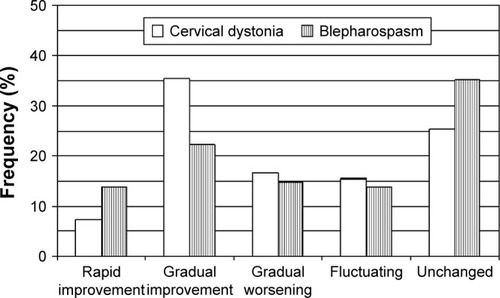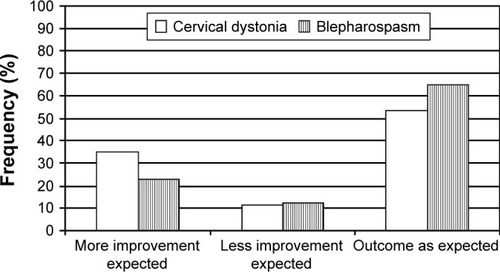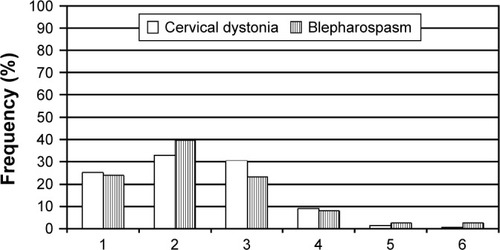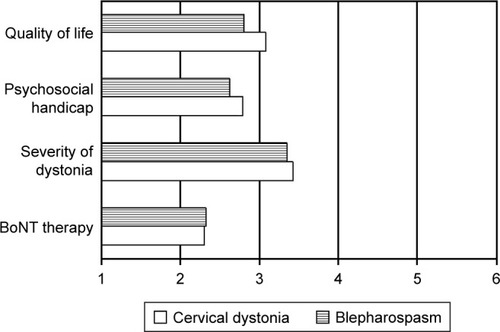Patient Preference and Adherence
Volume 11, 2017 - Issue
Open access
73
Views
10
CrossRef citations to date
0
Altmetric
Original Research
Treatment satisfaction with botulinum toxin: a comparison between blepharospasm and cervical dystonia
Bernd LeplowDepartment of Psychology, Martin-Luther-University Halle-Wittenberg, Halle (Saale), GermanyCorrespondence[email protected]
, Anna EggebrechtDepartment of Psychology, Martin-Luther-University Halle-Wittenberg, Halle (Saale), Germany
& Johannes PohlDepartment of Psychology, Martin-Luther-University Halle-Wittenberg, Halle (Saale), Germany
Pages 1555-1563
|
Published online: 14 Sep 2017
Related research
People also read lists articles that other readers of this article have read.
Recommended articles lists articles that we recommend and is powered by our AI driven recommendation engine.
Cited by lists all citing articles based on Crossref citations.
Articles with the Crossref icon will open in a new tab.





